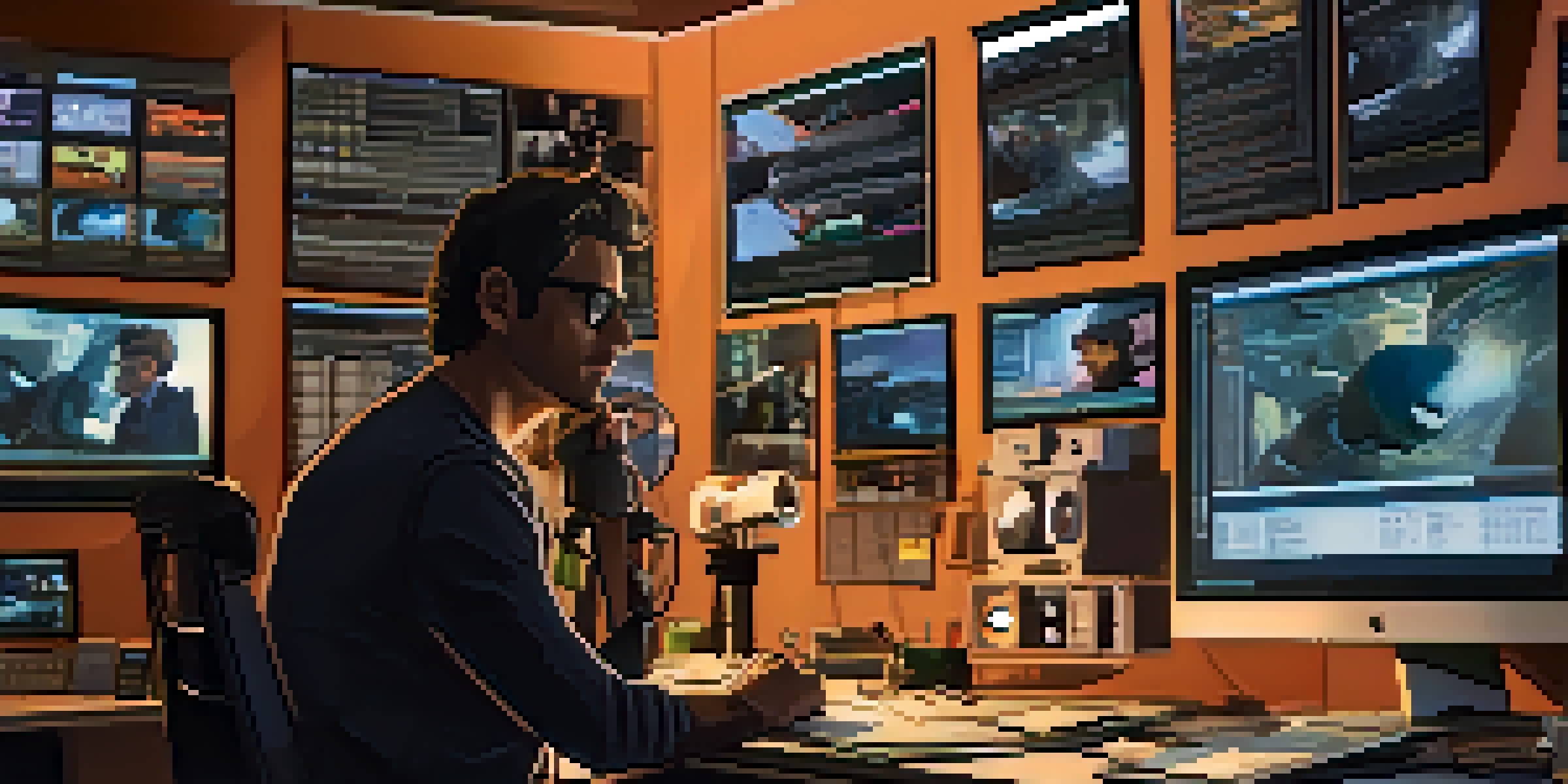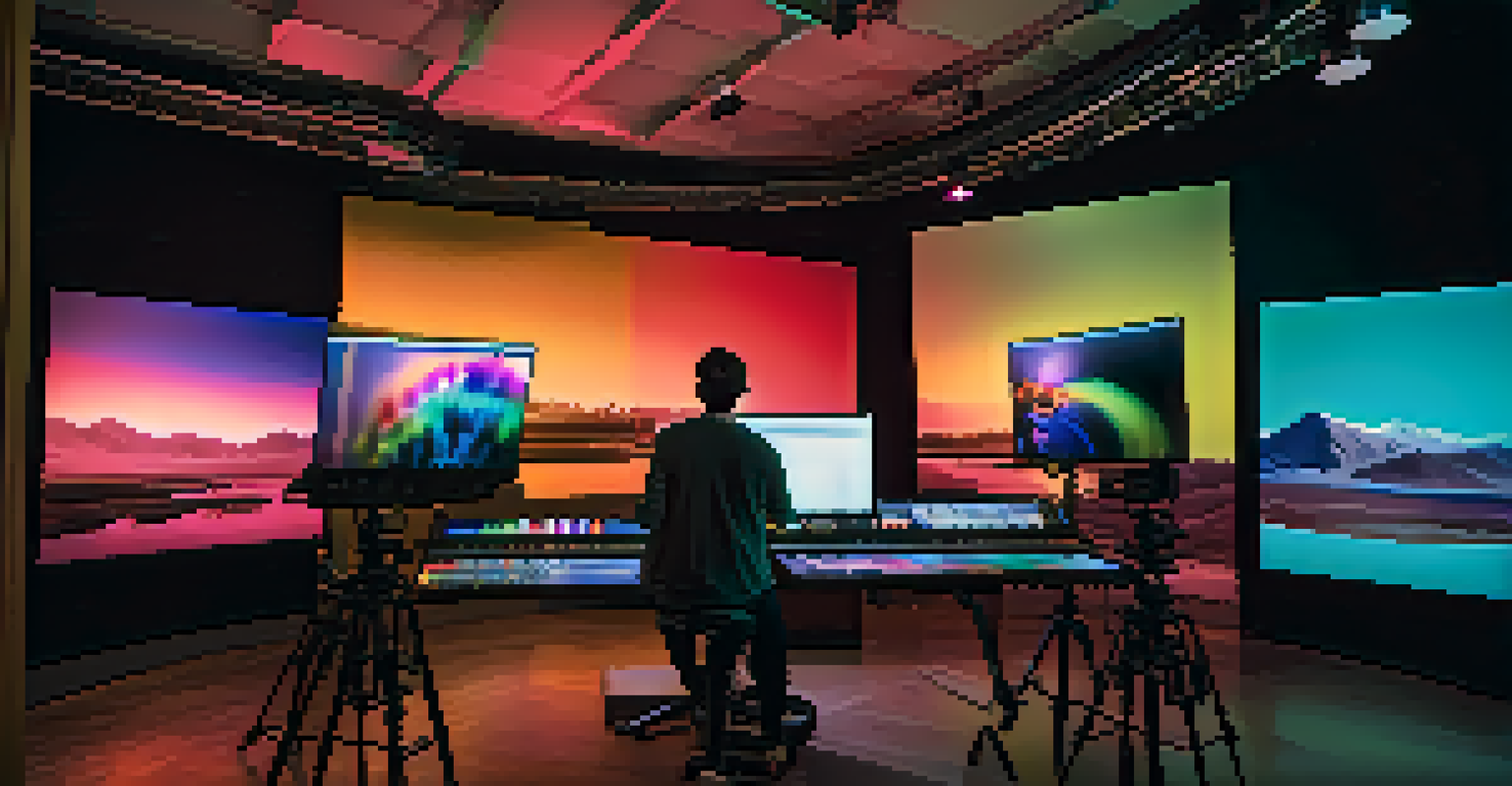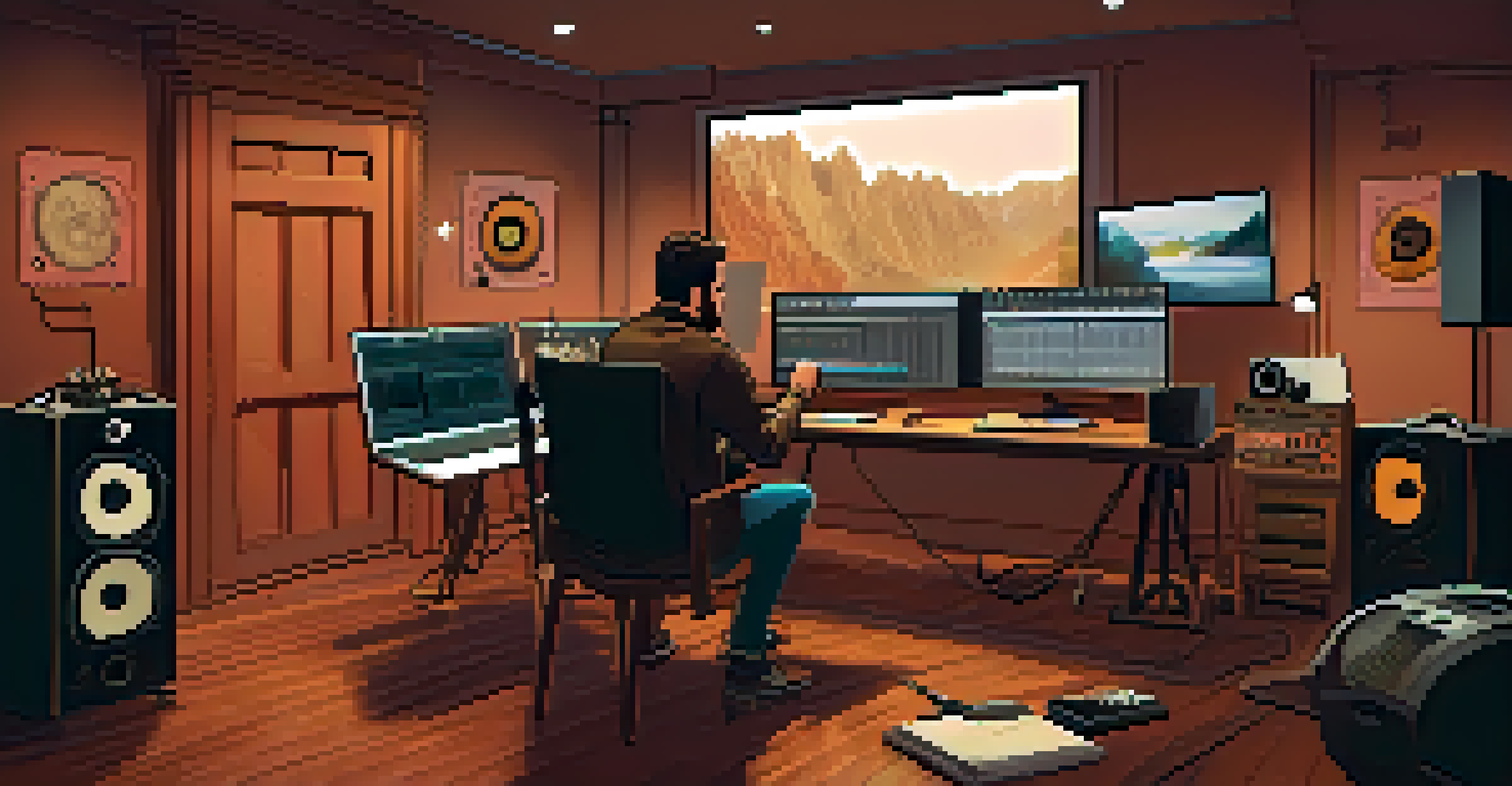The Director's Role in Post-Production Decisions

Understanding Post-Production and Its Importance
Post-production is the phase where a film truly begins to take shape. This stage includes editing, sound design, visual effects, and color grading, all of which are crucial to the final product. Essentially, it’s where the raw footage transforms into a polished film, ready for audiences.
The magic of cinema is in the editing. It can transform the mundane into something extraordinary.
For directors, this phase is critical because it allows them to realize their vision fully. They can manipulate the narrative pacing, enhance visual storytelling, and elevate emotional impact through careful editing choices. It’s a collaborative process, but the director’s voice remains vital throughout.
Understanding the post-production landscape helps directors make informed decisions. They need to communicate effectively with editors and sound designers, ensuring that their artistic intentions are met. This awareness can significantly influence the film’s success in resonating with viewers.
The Director's Vision and Creative Control
A director’s vision is the backbone of any film, guiding its themes, characters, and story arcs. In post-production, this vision must be translated from raw footage into a cohesive narrative. Directors often work closely with editors to ensure that the pacing and tone align with their original intent.

Creative control is a double-edged sword; while it empowers directors, it also requires them to make tough decisions. They may need to cut scenes that don’t serve the story or adjust performances through editing. Striking the right balance between artistic integrity and audience engagement is key.
Post-Production Shapes the Film
Post-production is where raw footage is transformed into a polished film through editing, sound design, visual effects, and color grading.
Ultimately, the director’s vision should shine through in the final cut. A strong collaboration with the post-production team can enhance this vision, leading to a film that feels unified and authentic. This alignment is essential for a successful storytelling experience.
Collaboration with Editors: A Vital Partnership
Directors and editors form a crucial partnership during post-production. While the director provides the vision, the editor translates that vision into a seamless narrative. Editors bring technical expertise and fresh perspectives, often suggesting cuts and transitions that enhance storytelling.
Sound is a huge part of film. If you get it right, it can elevate the entire experience.
This collaboration involves constant communication and feedback. Directors must trust their editors while also being clear about their intentions. Effective collaboration can lead to innovative solutions, such as reimagining scenes to improve pacing or emotional impact.
In many cases, the editing room becomes a creative playground. Directors may experiment with various cuts, discovering new ways to tell their story. This experimentation can lead to unexpected and powerful results that resonate with audiences.
Sound Design: Enhancing Emotional Impact
Sound design is another critical aspect of post-production that directors oversee. It encompasses everything from dialogue editing to sound effects and music selection. Directors often collaborate with sound designers to create an auditory experience that complements the visual narrative.
Sound can evoke emotions, build tension, and enhance storytelling. For instance, a well-timed sound effect can amplify a dramatic moment, while a subtle background score can enrich a scene’s emotional depth. Directors must make thoughtful choices about how sound interacts with the visuals.
Director's Vision Guides Editing
A director's vision is crucial during post-production, as they collaborate closely with editors to ensure the final cut aligns with their original intent.
Ultimately, effective sound design can elevate a film from good to great. By prioritizing sound in the post-production process, directors can ensure that their vision resonates on multiple sensory levels, engaging audiences in a more profound way.
Color Grading: Setting the Film's Mood
Color grading is the process of adjusting the color and tone of a film to create a specific mood or atmosphere. Directors play a vital role in this step, guiding colorists to achieve the desired aesthetic. The right color palette can significantly influence how viewers perceive a film.
For example, a warm color scheme might evoke feelings of nostalgia, while cooler tones can create a sense of detachment. Directors must consider how color supports the narrative and character development, making strategic choices that enhance storytelling.
Through collaboration with colorists, directors can fine-tune the film’s visual identity. This attention to detail can set a film apart, making it memorable for audiences. A well-executed color grading process reflects the director’s artistic vision and contributes to the overall impact of the film.
Visual Effects: Expanding Creative Possibilities
In today’s filmmaking landscape, visual effects (VFX) play a significant role in storytelling. Directors often work closely with VFX teams to create stunning visuals that enhance their narratives. Whether it's creating fantastical worlds or subtle enhancements, VFX can elevate a film to new heights.
Directors must have a clear vision of how VFX fits into their story. This requires collaboration with skilled artists who can bring those ideas to life. Effective communication ensures that the visual effects serve the narrative rather than overshadow it.
Final Review Ensures Cohesion
The final review is a director's last opportunity to assess the film as a whole, making necessary adjustments to align every element with their vision.
The integration of VFX can also lead to creative innovations. Directors might discover new ways to tell their stories through visual effects, pushing the boundaries of traditional filmmaking. This exploration can result in a unique film that captivates audiences with its creativity.
Final Review: The Director's Last Chance
The final review is a crucial moment for directors in the post-production process. It’s their opportunity to assess the film as a whole, ensuring that every element aligns with their vision. This stage often involves screening the film for trusted colleagues and making last-minute adjustments.
During the final review, directors may spot inconsistencies or elements that could be improved. This is also the time to ensure that the pacing, sound, and visual effects work harmoniously together. Every detail matters, as even small changes can significantly impact the overall experience.

Ultimately, the final review is a director's chance to put their stamp on the film. It’s a moment of reflection and decision-making, setting the stage for the film's release. By taking this process seriously, directors can ensure that their vision is realized in its entirety.